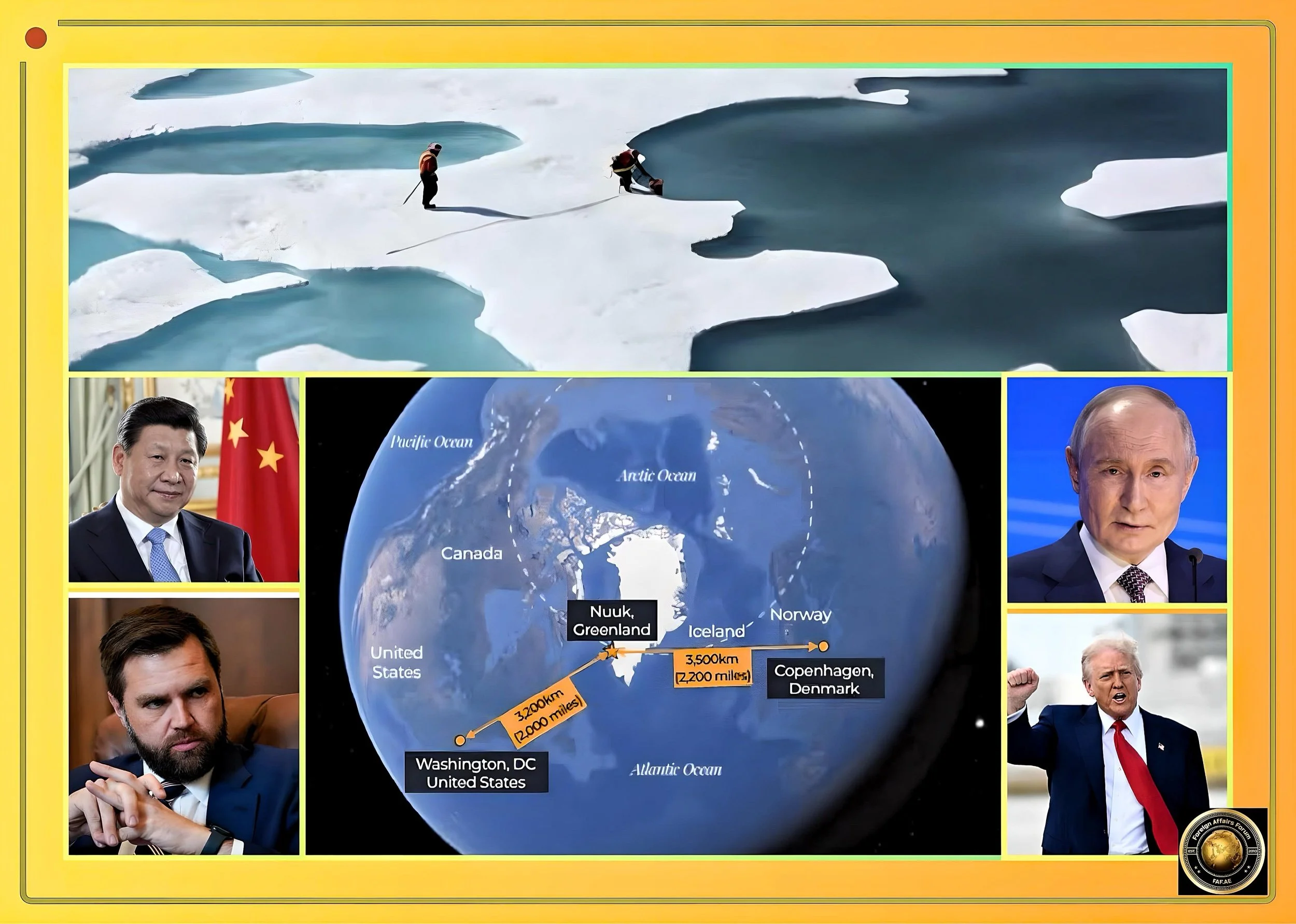The Multifaceted Challenges Facing China’s Arctic Mining Ambitions
Introduction
The Arctic region represents a frontier with immense potential for mining operations. It hosts 31 34 materials identified as essential for clean energy technology, including rare earth elements crucial for electric vehicles, batteries, and wind turbines.
As China positions itself as a “near-Arctic state” with ambitions to become a “polar great power” by 2035, its mining interests in the region face a complex web of challenges spanning geopolitical, economic, environmental, and technical domains.
Despite China’s strategic interest in Arctic resources, numerous obstacles stand in the way of realizing these ambitions.
China’s Strategic Interest in Arctic Resources
China views the Arctic as one of the world’s “new strategic frontiers,” ripe for rivalry and resource extraction.
The Chinese government officially declared its role in the “race to the North” through its Arctic Strategy, published in 2018.
The strategy emphasizes a “win-win strategy” that improves bilateral relationships with Arctic states to bolster China’s involvement in Arctic matters.
This approach aligns with China’s broader goal of securing resources critical for economic development and technological advancement.
Chinese companies follow their business priorities while eagerly seizing opportunities provided through supportive state policy in Arctic mining ventures.
However, the interaction between companies and the Chinese state varies significantly, with the Chinese Communist Party maintaining “a complex set of levers which make it possible to secure specific strategic investments.”
This relationship creates a nuanced framework where companies pursue profit while serving broader national interests.
Geopolitical and Governance Challenges
As a non-littoral state, China faces fundamental constraints in Arctic governance. Without territorial claims, China is “largely excluded from regional politics and regulatory management of Arctic resources.”
This limitation has prompted efforts to gain influence through other means, including heavy lobbying to become an Arctic Council observer and developing high-level diplomatic relationships.
China’s Arctic aspirations have increasingly become confined to Russia as Western European nations have grown more resistant to Chinese involvement.
The COVID pandemic forced Beijing to scale back its Arctic programs. At the same time, mounting concerns over China’s human rights record and aggressive actions elsewhere have made several Arctic countries reluctant to engage with China.
Due to local opposition, Chinese plans for research facilities in countries like Denmark’s Greenland have been shelved.
This geopolitical landscape has led to what experts describe as a collapse of “China’s political, economic, and soft power influence in the Arctic outside of Russia.”
With no direct access to Arctic waters, China has become heavily dependent on its partnership with Russia, raising concerns about the sustainability of this relationship amid broader geopolitical tensions.
Economic and Technical Challenges
The extreme Arctic environment imposes significant economic barriers to mining operations. High wages required to attract workers to the harsh conditions and strict regulatory frameworks in Arctic nations have traditionally deterred mining companies from seeking to minimize operational costs.
Short daylight hours and extreme cold create substantial hurdles for companies looking to build regional infrastructure.
China faces notable technical limitations in Arctic operations. The country has “limited technical expertise in polar navigation,” which impairs its ability to maintain a robust presence for resource extraction.
Despite purchasing its first icebreaker vessel, Xuelong (Snow Dragon), from Ukraine in 1993 and commissioning a second domestically constructed icebreaker in 2009, China’s ice-capable fleet remains modest compared to Arctic nations.
Furthermore, China’s track record with Arctic investments has been mixed at best. According to research, “many Chinese investments have failed.”
For example, “a major Chinese firm abandoned a Canadian zinc mine, refused to pay creditors, and left local governments to pay to clean up an environmental disaster.”
In Greenland, “a Chinese conglomerate abandoned its iron mine after running into legal trouble in China,” In Iceland, “a Chinese company withdrew from an Arctic exploration partnership due to poor initial resource estimates.”
These failures highlight the economic risks and challenges of operating in the Arctic environment.
Environmental Challenges
China’s environmental footprint presents a complex challenge for its Arctic mining ambitions.
As the world’s largest greenhouse gas emitter, accounting for 27 percent of global emissions in 2017, China contributes significantly to climate change affecting the Arctic region.
Additionally, China produces 20-24 percent of global black carbon emissions, accelerating warming in glaciated regions, including the Arctic.
China’s domestic experience with rare earth mining offers a cautionary tale for Arctic operations.
The extraction of rare earth elements “using a mix of water and chemicals, caused extensive water and soil pollution” in China.
The cleanup bill for southern Jiangxi Province alone was estimated at 38 billion yuan (approximately $5.5 billion), highlighting the enormous environmental costs of such operations.
Environmental experts argue that “the cost of the cleanup should not be shouldered by the Chinese government alone, but also by the rare earth industry and the global companies and consumers that benefit from these technologies.”
There are concerns that similar environmental damage could occur if comparable mining practices were implemented in the Arctic region.
Interestingly, China faces risks from Arctic climate change, as many of its coastal mega-cities, such as Shanghai, Tianjin, and Hong Kong, are expected to suffer from flooding due to rising sea levels caused by melting Arctic sea ice.
This creates a paradoxical situation in which China’s resource extraction activities could exacerbate environmental changes, threatening its security.
Strategic Perception Challenges
China’s Arctic activities face significant perception challenges from Western nations concerned about potential hidden agendas. Although China often emphasizes scientific research and economic cooperation in its external messaging, internal Chinese discourse reveals more strategic motivations.
While China “sometimes speaks with two voices on the Arctic: an external one aimed at foreign audiences and a more cynical internal one emphasizing competition and Beijing’s Arctic ambitions,” this dual messaging creates mistrust.
Several Chinese infrastructure projects in the Arctic “that have little economic gain have raised concerns about strategic motivations and dual-use capabilities.”
These include efforts by a former Chinese propaganda official to purchase large tracts of land in Iceland and Norway’s Svalbard archipelago, attempts to acquire a naval base in Greenland, and investments in ports and transportation infrastructure across the region.
U.S. officials have expressed concerns that “China might be on its way to becoming a security and military actor in the Arctic and that Russia is enabling this pathway.”
This security lens through which Western nations view Chinese activities creates additional obstacles for mining ventures, as investments may face increased scrutiny and resistance due to perceived security implications.
China must carefully navigate these perceptions while pursuing its resource interests. Beijing appears aware of these challenges and is proceeding “cautiously, wary of angering the U.S. and Europe.”
This balancing act constrains China’s freedom of action in pursuing Arctic mining opportunities.
Future Prospects and Adaptation Strategies
Despite many challenges, China continues to pursue its Arctic mining ambitions through adaptive strategies.
One approach involves increasing cooperation with Russia, which has the “upper hand in the great Arctic oil race” and holds jurisdiction over significant Arctic resources.
China has invested in Russia’s Yamal LNG project in northern Siberia. It views LNG as a “greener alternative to coal burning, " aligning with China’s domestic air quality goals.
China’s Arctic white paper emphasizes that “sustainability” is “the fundamental goal” of its Arctic engagement, which “means promoting the sustainable development of the Arctic by ensuring the sustainability of environmental protection, resource utilization and human activities in the area.”
This message indicates awareness of the need to address environmental concerns while pursuing resource extraction.
Scientific research represents another avenue through which China seeks to advance its Arctic interests. Chinese investments in Arctic science are “intended to buttress its Arctic influence and strategic position.”
While externally portrayed as pursuing scientific research for global welfare, internal Chinese discourse clarifies that science is motivated by “a drive for ‘the right to speak,’ cultivating China’s ‘identity’ as an Arctic state, and securing resources and strategic access.”
Conclusion
China’s Arctic mining ambitions face a complex constellation of challenges requiring sophisticated, long-term strategies to overcome.
The combination of geopolitical limitations, technical and economic obstacles, environmental concerns, and strategic perception issues creates a demanding landscape for Chinese mining ventures in the region.
The future success of these ambitions will likely depend on China’s ability to address these challenges holistically, possibly by improving technological capabilities, developing sustainable mining practices, cultivating stronger relationships with Arctic nations beyond Russia, and addressing concerns about strategic intentions.
However, as Arctic nations become increasingly wary of Chinese influence and as environmental considerations gain prominence in resource extraction decisions, China may need to significantly adapt its approach to realize substantial mining operations in the Arctic region.
As global demand for critical minerals and rare earth elements continues to rise, driven by the transition to green energy technologies, the economic incentives for overcoming these challenges will likely intensify.
The question remains whether China can transform these multifaceted challenges into opportunities that align with its national interests and the sustainable development of the Arctic region.





